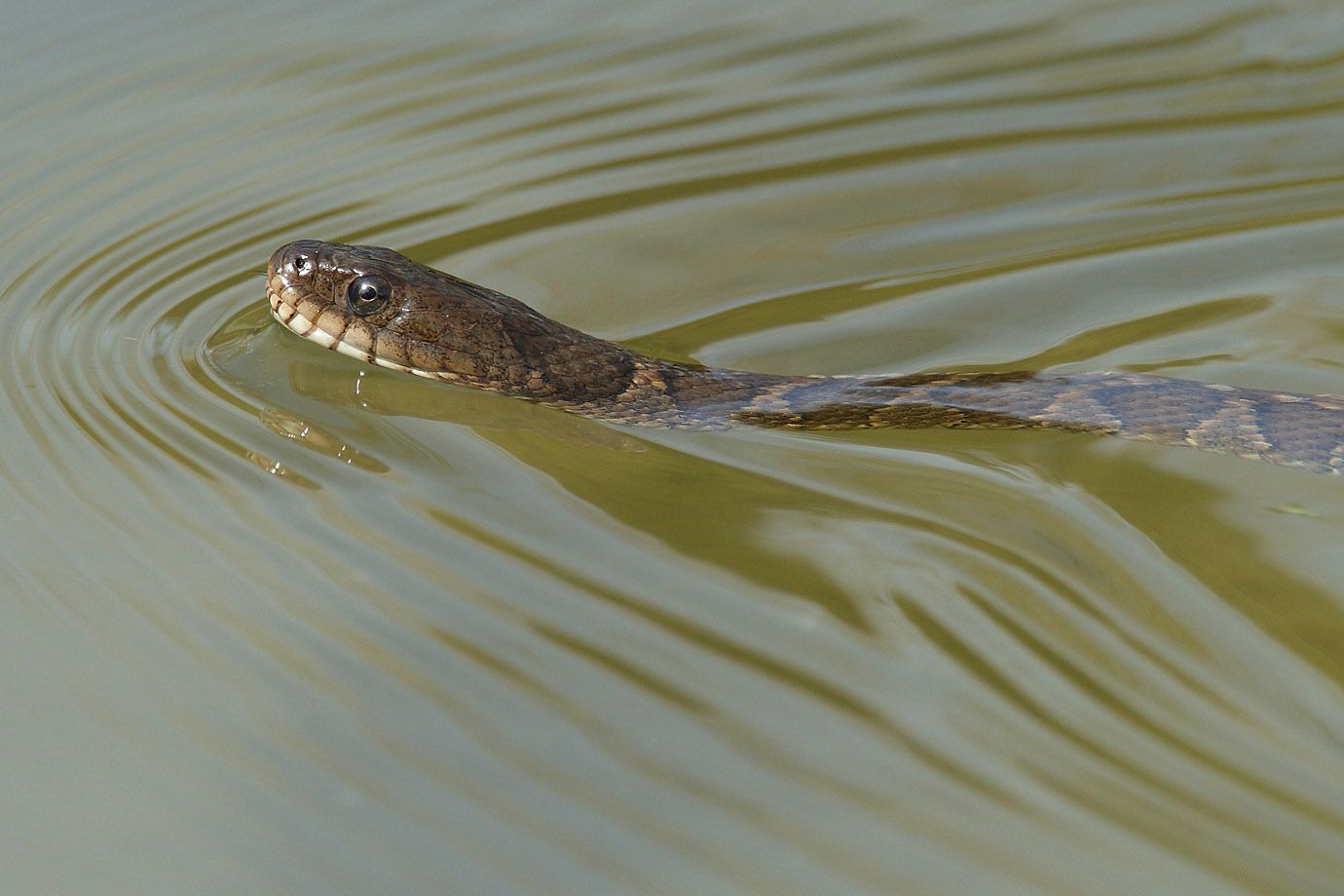
Northern Water Snake
The Northern water snake (Nerodia sipedon) is a large, nonvenomous, well-known snake in the Colubridae family that is native to North America.
They are active during the day and at night. They are most often seen basking on rocks, stumps, or brush. During the day, they hunt among plants at the water's edge.
The Northern water snake can grow up to 135 cm long. They can be brown, gray, reddish, or brownish-black. They have dark crossbands on their necks and dark stripes and blotches on the rest of their bodies, often leading to misidentification as cottonmouths or copperheads by novices. They darken as they age. Some will become almost completely black. The belly of this snake also varies in color. It can be white, yellow, or gray. Usually it also has reddish or black crescents.
Northern water snakes mate from April through June. They are ovoviviparous (live-bearers), which means they do not lay eggs like most snakes. Instead, they carry them inside their bodies and give birth to baby snakes, each one 19–23 cm long. A female may have as many as thirty young at a time. Babies are born between August and October. Mothers do not care for their young; as soon as they are born, they are on their own.
Source:http://en.wikipedia.org/wiki/Nerodia_sipedon - 27.11.2011
Northern Water Snake
It is astonishing, that such Snakes with their slender body without legs and fins, are able to move in such a light-handed way.








